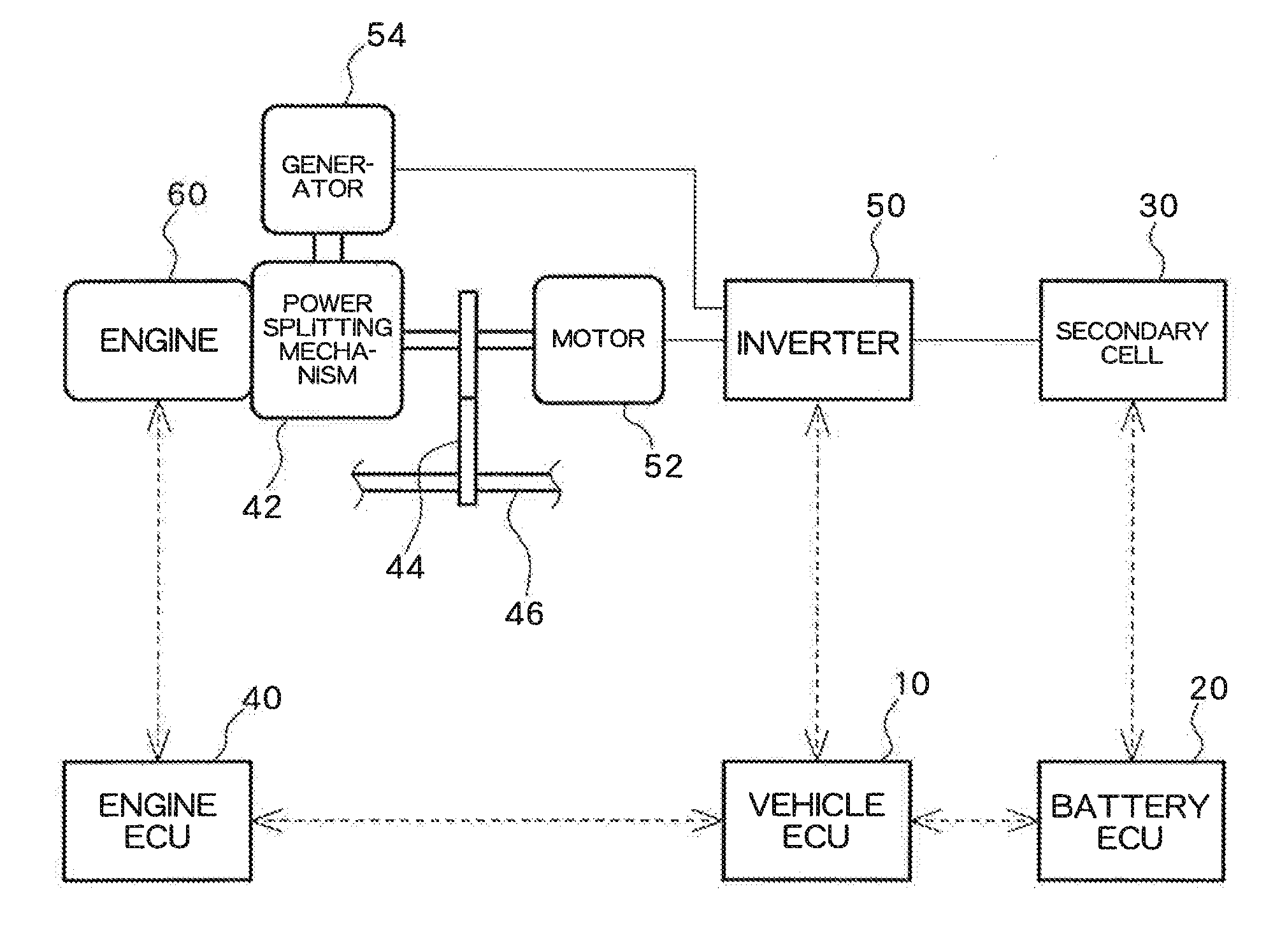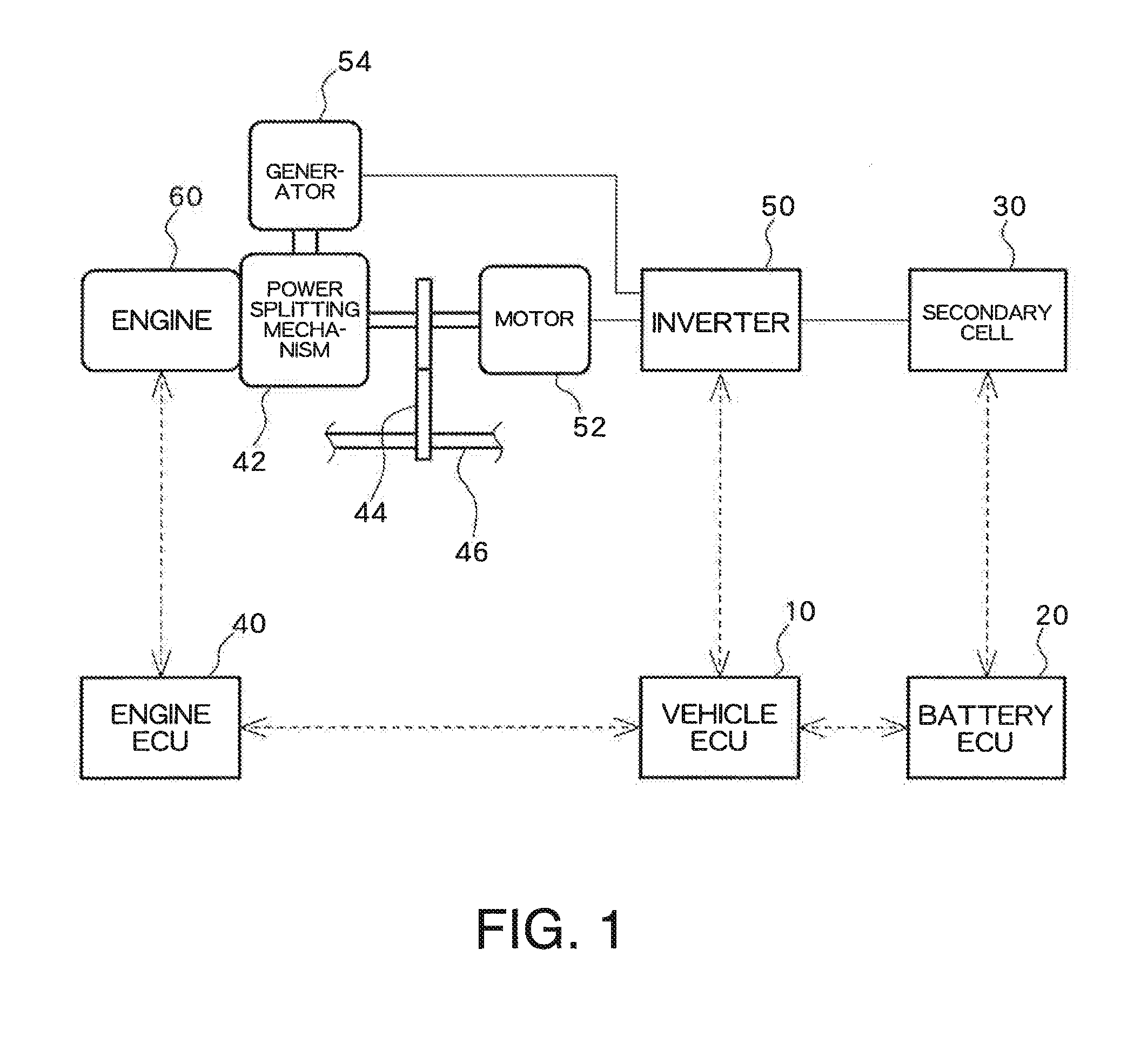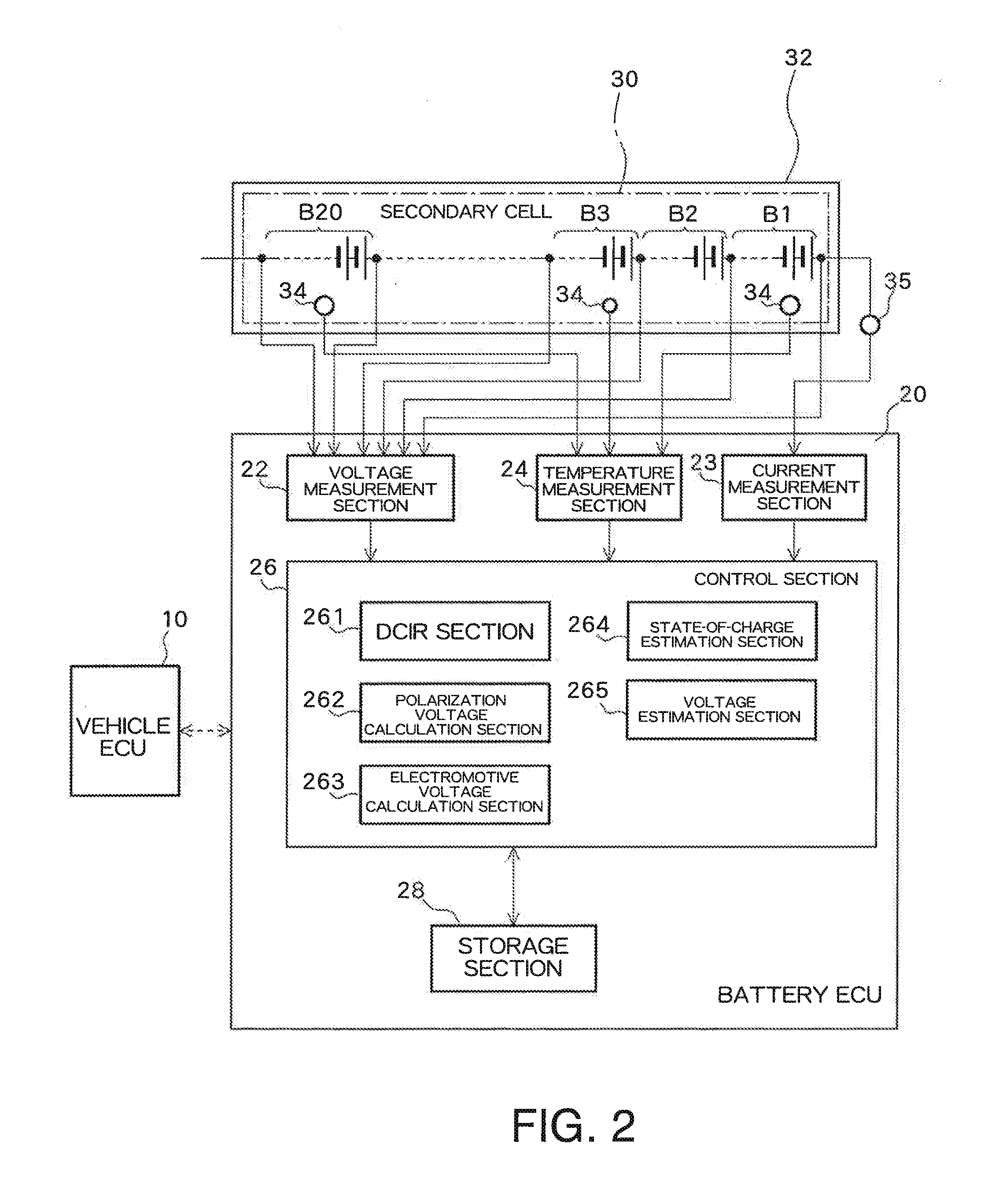Device and method for estimating secondary cell status
- Summary
- Abstract
- Description
- Claims
- Application Information
AI Technical Summary
Benefits of technology
Problems solved by technology
Method used
Image
Examples
first embodiment
[0034]FIG. 1 illustrates a general configuration of a hybrid electric vehicle. A vehicle ECU 10 controls an inverter 50 and an engine ECU 40. The engine ECU 40 controls an engine 60. A battery ECU 20 acts as a state-of-charge estimation device and estimates a state of charge (SOC) of a secondary cell 30 by receiving from the secondary cell 30 data pertaining to a battery voltage V, a charge-and-discharge current I, a battery temperature T, and the like. The battery ECU 20 transmits battery data, like an SOC and a battery temperature of the second cell 30, to the vehicle ECU 10. The vehicle ECU 10 controls the engine ECU 40, the inverter 50, and others, on the basis of various types of battery data, thereby controlling charge and discharge of the secondary cell 30.
[0035]The secondary cell 30 supplies power to a motor 52. The inverter 50 converts d.c. power supplied from the secondary cell 30 into a.c. power during discharge of the secondary cell 30, supplying the a.c. power to the mo...
second embodiment
[0091]In the first embodiment, an optimum model is set, and parameters of the optimum model are next optimized. Conversely, however, parameters of respective models are first optimized, and an optimum model can also be set subsequently.
[0092]FIG. 12 illustrates a processing flowchart of the control section 28 of the embodiment. The processing flowchart differs from its counterpart illustrated in FIG. 3 in that parameters of respective models are optimized (S303) and that model outputs are then evaluated (S304), thereby setting an optimum model (S305). After the optimum model is set, the status of the secondary cell 30; specifically, an estimated SOC value, is output by use of the optimum model as in the case with FIG. 3 (S306).
[0093]Parameter optimization is similar to that described in connection with the first embodiment and performed by use of a measured current value and a measured voltage value in accordance with the recursive least square algorithm. Accordingly, optimum model ...
third embodiment
[0099]In the first embodiment, after an optimum model selected from a plurality of models is set, parameters of the model are optimized. In the second embodiment, after parameters of a plurality of models are optimized, an optimum model is set. Each of the embodiments has its merits and demerits. Namely, the method described in connection with the first embodiment exhibits a relatively low degree of accuracy but is advantageous in that processing can be speeded up. The method described in connection with the second embodiment involves consumption of much processing time but is advantageous in a relatively higher degree of accuracy. Parameter optimization processing involves a relatively large amount of processing. When all models are subjected to parameter optimization, much time is eventually consumed. Accordingly, it is preferable to select an appropriate method depending on processing capability of the processor of the control section 26. When the processor has a relatively highe...
PUM
 Login to View More
Login to View More Abstract
Description
Claims
Application Information
 Login to View More
Login to View More - R&D
- Intellectual Property
- Life Sciences
- Materials
- Tech Scout
- Unparalleled Data Quality
- Higher Quality Content
- 60% Fewer Hallucinations
Browse by: Latest US Patents, China's latest patents, Technical Efficacy Thesaurus, Application Domain, Technology Topic, Popular Technical Reports.
© 2025 PatSnap. All rights reserved.Legal|Privacy policy|Modern Slavery Act Transparency Statement|Sitemap|About US| Contact US: help@patsnap.com



